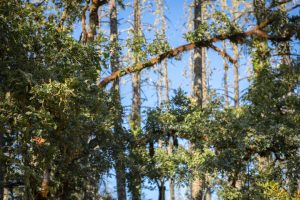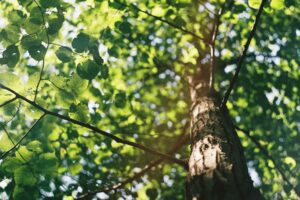What Company Services Trees?

Truco Services, Inc.: Your Trusted Tree Care Company in Utah
Introduction:
Maintaining the health and beauty of trees requires expert care and specialized services. In Utah, residents and businesses can turn to Truco Services, Inc. for all their tree care needs. With a team of certified arborists and extensive industry experience, Truco Services, Inc. is a leading tree service company that offers a wide range of professional solutions. In this article, we will explore the exceptional services provided by Truco Services, Inc. and highlight why they are the go-to choice for tree care in Utah.
Expert Tree Care Services:
Truco Services, Inc. specializes in comprehensive tree care services designed to enhance the health, safety, and aesthetics of trees. Their team of certified arborists possesses the knowledge and expertise necessary to address a variety of tree-related concerns. From routine tree maintenance to emergency tree removal, Truco Services, Inc. offers a broad spectrum of tree care solutions tailored to meet the unique needs of each client.
Certified Arborists and Skilled Team:
At Truco Services, Inc., tree care is a profession entrusted to certified arborists who have undergone rigorous training and possess in-depth knowledge of tree biology, diseases, and care techniques. The company’s team of experts is dedicated to providing exceptional service with attention to detail and a commitment to maintaining the health and vitality of every tree they work on. With years of experience in the industry, Truco Services, Inc.’s arborists bring a wealth of expertise to every project.
Comprehensive Tree Care Solutions:
Truco Services, Inc. offers a wide range of tree care services to address various needs. Their services include tree trimming, pruning, tree removal, stump grinding, and disease diagnosis and treatment. Whether it’s maintaining the aesthetics of your landscape or mitigating risks posed by large trees, Truco Services, Inc. has the expertise and resources to handle any tree care challenge.
Emphasis on Safety and Quality:
Safety is a top priority for Truco Services, Inc. Their team follows industry best practices and adheres to strict safety protocols to ensure the well-being of their clients, their property, and their own staff. By using state-of-the-art equipment and employing proper techniques, Truco Services, Inc. guarantees safe and efficient tree care services. Furthermore, the company is committed to delivering exceptional quality in every aspect of their work, ensuring that customers receive the highest level of service and satisfaction.
Customer-Focused Approach:
Truco Services, Inc. understands that every client has unique tree care needs. They take a customer-focused approach, tailoring their services to meet individual requirements. The company offers free consultations, allowing their certified arborists to assess the health of trees, identify potential risks, and provide expert advice on the best course of action. This personalized approach ensures that customers receive the most effective and efficient tree care solutions for their specific situations.
Commitment to Environmental Stewardship:
Truco Services, Inc. recognizes the importance of preserving and protecting natural resources. They actively promote sustainable practices, such as tree preservation, recycling of wood debris, and responsible use of equipment and chemicals. By partnering with Truco Services, Inc., clients can be confident that their tree care needs are met while minimizing environmental impact.
Conclusion:
When it comes to professional tree care services in Utah, Truco Services, Inc. stands out as a trusted and reliable company. With their team of certified arborists, extensive industry experience, and commitment to safety and quality, Truco Services, Inc. offers comprehensive tree care solutions tailored to each client’s unique needs. Whether it’s tree trimming, removal, or disease treatment, they have the knowledge and expertise to deliver exceptional results. Contact Truco Services, Inc. today for a free consultation and experience the difference of working with a leading tree care company dedicated to the health and beauty of your trees.
About Murray, Utah
Murray is a city situated on the Wasatch Front in the core of Salt Lake Valley in the U.S. state of Utah. Named for territorial governor Eli Murray, it is the state's fourteenth largest city. According to the 2020 census, Murray had a population of 50,637. Murray shares borders with Taylorsville, Holladay, South Salt Lake and West Jordan, Utah. Once teeming with heavy industry, Murray's industrial sector now has little trace and has been replaced by major mercantile sectors. Known for its central location in Salt Lake County, Murray has been called the Hub of Salt Lake County. Unlike most of its neighboring communities, Murray operates its own police, fire, power, water, library, and parks and recreation departments and has its own school district. While maintaining many of its own services, Murray has one of the lowest city tax rates in the state.
Neighborhoods in Murray, Utah
Murray Oakes, Grant Park, Southwood Park, Murray Park, Murray Park Restrooms, Willow Pond Park, Neighborhood Veterinary Care
Things To Do in Murray, Utah
Bus Stops in Murray, Utah to Truco Services, Inc.
Bus Stop in Murray Central Station (Bay C) Murray, Utah to Truco Services, Inc.
Bus Stop in State St @ 4801 S Murray, Utah to Truco Services, Inc.
Bus Stop in Murray North Station Murray, Utah to Truco Services, Inc.
Bus Stop in State St @ 4949 S Murray, Utah to Truco Services, Inc.
Bus Stop in Murray Central Frontrunner/Trax Station Murray, Utah to Truco Services, Inc.
Bus Stop in Murray Blvd / Vine St (SB) Murray, Utah to Truco Services, Inc.
Bus Stop in State St @ 3925 S Murray, Utah to Truco Services, Inc.
Bus Stop in State St @ 4824 S Murray, Utah to Truco Services, Inc.
Bus Stop in State St @ 5223 S Murray, Utah to Truco Services, Inc.
Bus Stop in Murray Blvd / Allendale Dr (NB) Murray, Utah to Truco Services, Inc.
Bus Stop in Murray Blvd @ 5039 S Murray, Utah to Truco Services, Inc.
Bus Stop in State St @ 4721 S Murray, Utah to Truco Services, Inc.
Driving Directions in Murray, Utah to Truco Services, Inc.
Driving Directions from Woodruff Tree Trimming and Removal to 4640 Commerce Dr, Murray, UT 84107, USA
Driving Directions from Reliable Tree Care to 4640 Commerce Dr, Murray, UT 84107, USA
Driving Directions from Tree Pro-Tech to 4640 Commerce Dr, Murray, UT 84107, USA
Driving Directions from Prestige Tree And Landscape to 4640 Commerce Dr, Murray, UT 84107, USA
Driving Directions from Excellence Tree & Landscape to 4640 Commerce Dr, Murray, UT 84107, USA
Driving Directions from Amen Trees to 4640 Commerce Dr, Murray, UT 84107, USA
Driving Directions from Tim's Tree Care to 4640 Commerce Dr, Murray, UT 84107, USA
Driving Directions from Jordan Tree Service - Murray to 4640 Commerce Dr, Murray, UT 84107, USA
Driving Directions from Arbor Works to 4640 Commerce Dr, Murray, UT 84107, USA
Driving Directions from Diamond Tree Experts to 4640 Commerce Dr, Murray, UT 84107, USA
Driving Directions from Green Tree Arborist to 4640 Commerce Dr, Murray, UT 84107, USA
Driving Directions from TruCo Services to 4640 Commerce Dr, Murray, UT 84107, USA
Reviews for Truco Services, Inc. Murray, Utah
Emily Abercrombie
We had a great experience with TruCo! They were well priced, responsive and prompt. Michael was a pleasure to work with and gave us advice on which plants to put in where we took out our ugly old shrubs. I would highly recommend this company!!!
Michelle Turpin
TruCo Services gets 5 stars from us for customer service. We experienced a few issues with their services this last year and Rob Eccles in senior management, stepped in and immediately handled our issues. He was very committed to making sure they understood our expectations and would execute to make us happy.
Siobhan Billingsley
I work for a property management company and have the pleasure of working with Rob at a community in Sandy. He has been incredible to work with and always responds in a timely manner. He knows all the homeowners by name and address and is aware of all the "problem" areas when it comes to sprinklers. I never have to worry about following up with him because he always reaches out to provide me with an update. If you're looking to work with someone who takes pride in their job, is professional, and can solve the worst landscaping problems thrown your way, Rob is your guy. Thank you, Rob for all you do!
Jaime S.
We have used Truco at 2 of the complexes we manage, they have been great to work with. Good quality service, outstanding customer service with good communication. That's hard to find these days. I highly recommend them. Travis has been awesome to work with.
Jerusha Smart
We use TruCo for a majority of our properties and our home. While other landscaping companies we use come and go for various reasons like cost, communication issues, work performance, etc., TruCo is always consistent in price and work. Also, Rob is the best.

